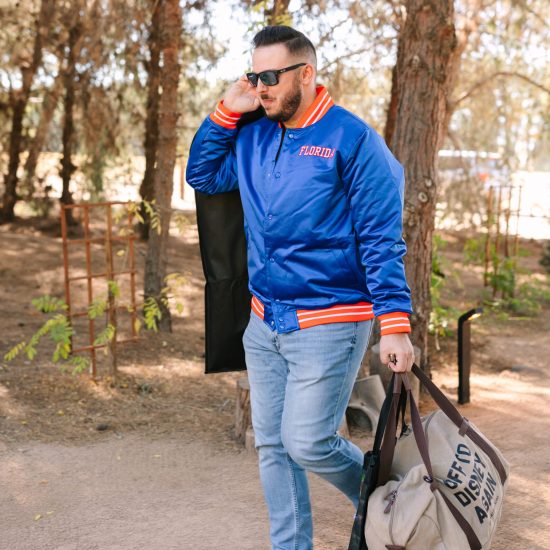We don’t know what the Chicago Cubs‘ roster will look like next year. Or the year after that. Or the year after that. But we know Nico Hoerner will be a part of it. Which is probably more than you can say about a lot of players calling the North Side home right now.
That sentiment, however, was far more of a question prior to 2022. Even after the Cubs traded Javier Báez at last year’s trade deadline, the long-term role of Nico Hoerner was the subject of some heavy speculation. Sure, he was drafted as a shortstop out of Stanford, but would he stay there? Would it be a transition over to second base? Could the Cubs throw him out onto the outfield grass and turn him into a superutility type a la Ben Zobrist?
It got more complicated still when the Cubs acquired Nick Madrigal at last year’s trade deadline. And questions continued to linger when the Cubs were listed among the suitors for Carlos Correa. After the Cubs signed Andrelton Simmons, they still persisted, even if a little bit less confident at that point. Make no mistake about it now, though. Nico Hoerner is the Cubs’ franchise shortstop. And that has sort of complicated things.
By a number of measures, Nico Hoerner has been an elite shortstop in 2022. His numbers don’t necessarily jump off the screen. But he currently sits seventh in fWAR (2.5), has the third-lowest K% (10.9), and sits seventh in wRC+ (113) among 25 shortstops that have at least 250 plate appearances.
Sure, there’s a very noticeable dearth of power. His ISO is at .111, he’s 22nd percentile in HardHit%, and 11th percentile in Barrel%. He’s not really an impact bat. But there’s a lot to be said for somebody who makes contact in the mid-80s (85.4 percent) and is 93rd percentile in Whiff% (15.4). Especially when you factor in the defense.
And it’s the glove that has really established Hoerner as the organization’s future staple at the six. His 9.0 Def rating, courtesy of FanGraphs, leads the position. His 10 Defensive Runs Saved are tied for the most. And his nine Outs Above Average are also pacing the six position, while sitting sixth in the league at any position.
It’s a snapshot of what Nico Hoerner has turned in thus far in 2022. But it’s important to at least provide a little bit of context for what has entrenched him at the shortstop position for the foreseeable future. Because prior to 2022, it seemed like a certainty that Hoerner would be playing second base for the Cubs moving forward (to say nothing of Nick Madrigal’s presence on the roster). But now the conversation changes.
And it’s an interesting conversation to have. The Cubs’ brass has assured fans that the spending will come. And while we should probably take anything that comes from their leadership with the largest grain of salt possible, there are some intriguing options at the shortstop position this winter. Trea Turner, Xander Bogaerts, Dansby Swanson, and (possibly) Carlos Correa can all hit the open market. For a free agent class that isn’t super rich outside of the position (save for one Aaron Judge), and an organization that insists they’re going to spend, there’s some allure there.
How the Cubs approach that free agent class could depend on how they view Nico Hoerner. Do they see him as the shortstop of the future? His range and arm have exceeded expectations, and it’s left little doubt that he can handle the position defensively. Those leather-based questions were always the sticking point when discussing his long-term future, anyway. So based on just that, it’s unlikely the Cubs perceive him as anything other than the guy who can hold that spot for at least the next few years.
But then there’s the offensive question to consider. Hoerner is a very capable contact bat. There’s occasional power, but it’s not that occasional. Every single shortstop available would represent a fairly notable offensive upgrade in terms of impact. I mentioned the wRC+ leaderboard; all four of the names listed above are not only ahead of Hoerner, but are the top four at the position. So you’re getting a boost offensively, but perhaps not on the infield dirt.
Although, that’s also assuming that signing one of those names would mean supplanting Hoerner at shortstop. At which point Hoerner moves to second or becomes that superutility-type mentioned earlier (which has its own Madrigal-related implications as well). However, signing any of those four wouldn’t necessarily mean a straight-up replacement at shortstop. While Turner and Swanson have posted elite defensive metrics, Bogaerts and Correa certainly have not. So it’s entirely conceivable that you’re looking at signing the offensive upside and worrying about the defensive configuration later. Even Turner had to slide to the other side of second upon his arrival in Los Angeles.
Now, an alarmist would say that now that the Cubs have Nico Hoerner and his team-control-through-2026, they could feel less inclined to pursue that high-impact talent at the position this winter. And it’s not entirely out of the realm of possibility that they duck out of the market for any of those four under the guise of having their shortstop in the organization.
But the way the Cubs would, ideally, approach this is by signing the bat first and worrying about everything else later. Bogaerts has said he wants to stick at short. Correa said he would move. At the end of the day, you don’t really know what that situation could look like. What we do know is that a Cubs lineup with Nico Hoerner and Bogaerts or Turner or Swanson or Correa is better than one with Nico Hoerner and Andrelton Simmons or Nick Madrigal. That part isn’t difficult.
That’s all that should really matter to the Cubs at this point.
Photo by David J. Griffin/Icon Sportswire | Adapted by Doug Carlin (@Bdougals on Twitter)

